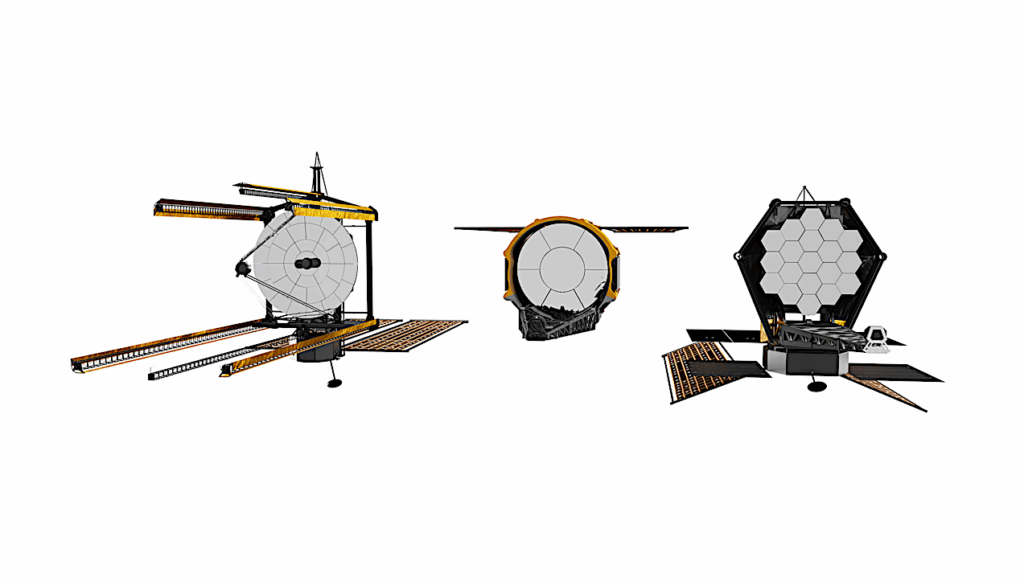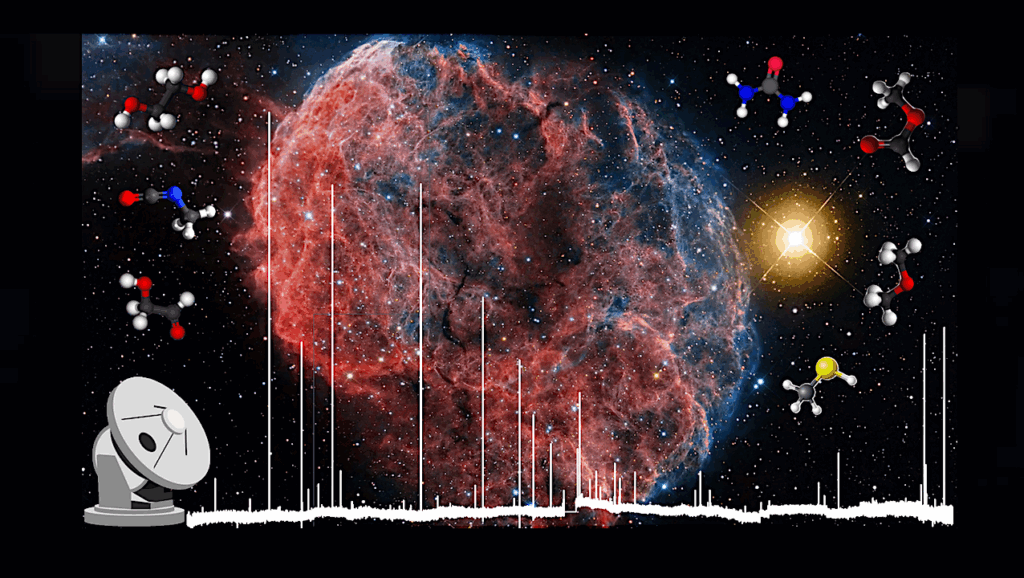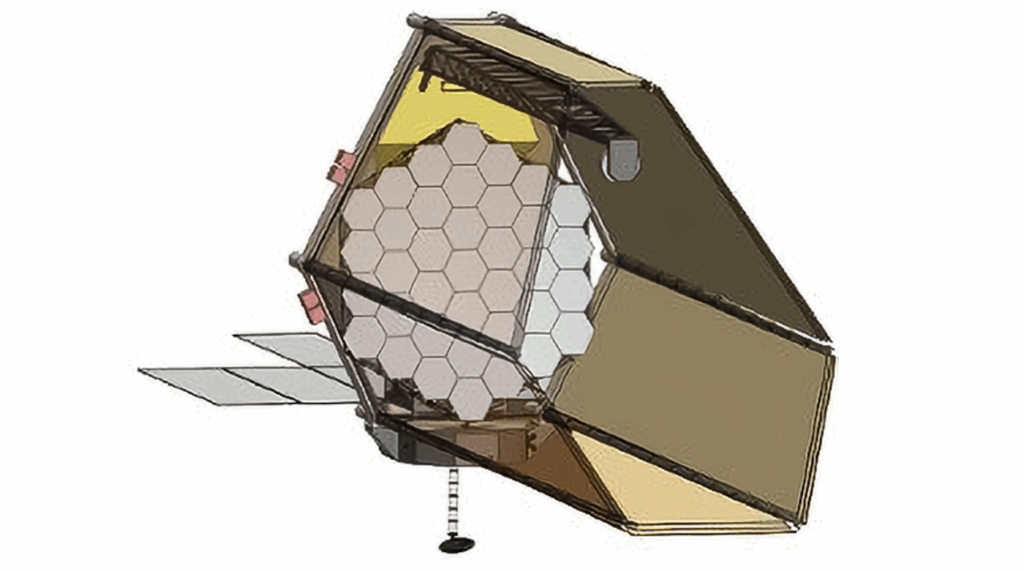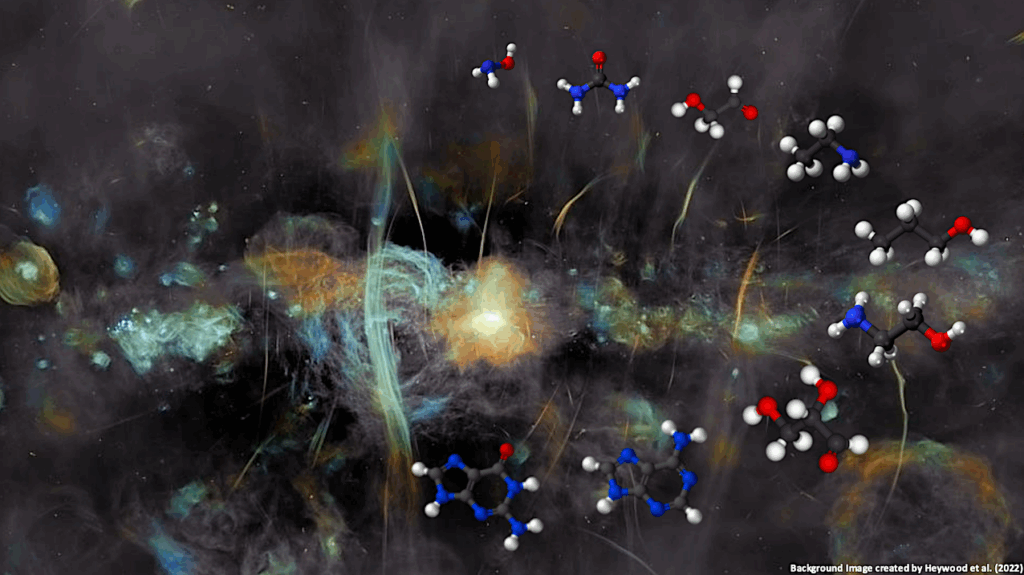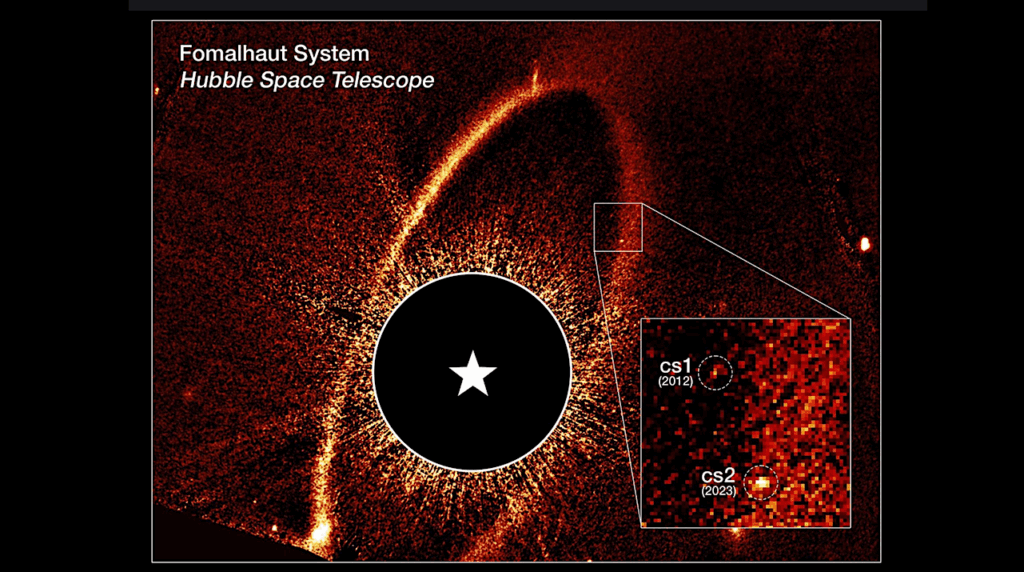Three Low Mass-ratio Microlensing Planets Detected Through Dip Signals
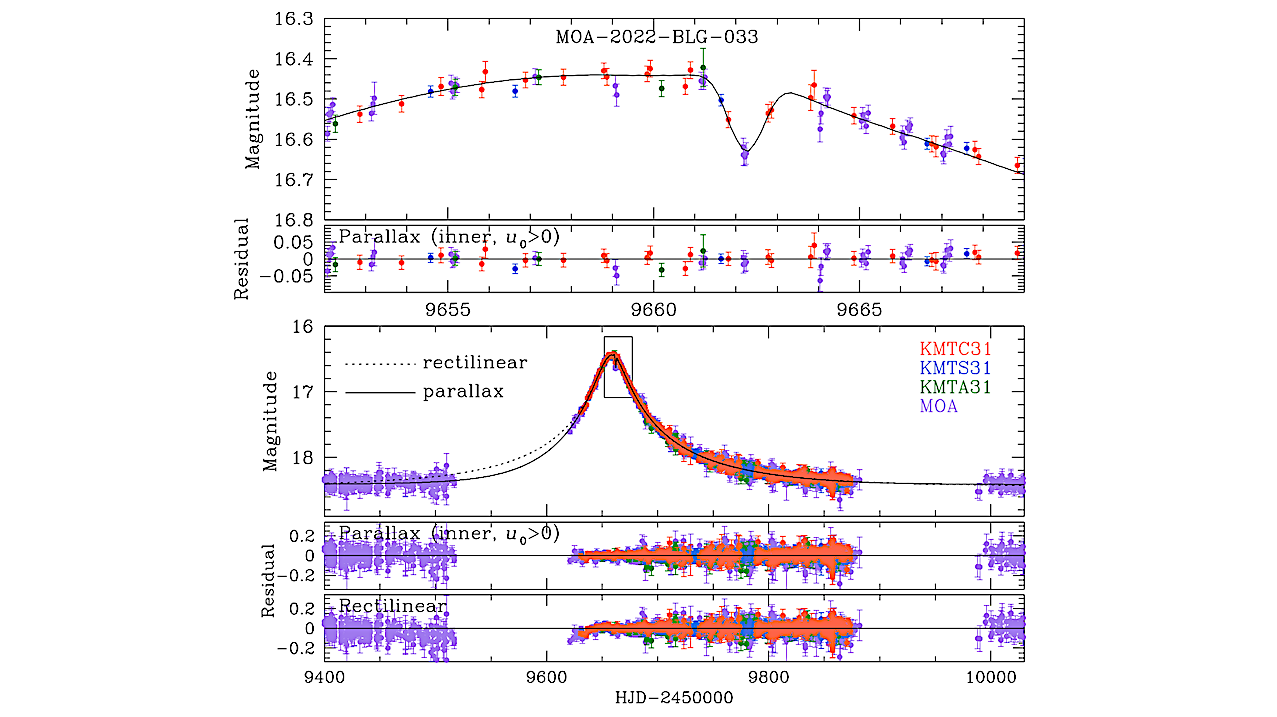
We examined the anomalies in the light curves of the lensing events MOA-2022-BLG-033, KMT-2023-BLG-0119, and KMT-2023-BLG-1896.
We conducted detailed modeling of the light curves to uncover the nature of the anomalies. This modeling revealed that all signals originated from planetary companions to the primary lens. The planet-to-host mass ratios are very low: q∼7.5×10−5 for MOA-2022-BLG-033, q∼3.6×10−4 for KMT-2023-BLG-0119, and q∼6.9×10−5 for KMT-2023-BLG-1896.
The anomalies occurred as the source passed through the negative deviation region behind the central caustic along the planet-host axis. The solutions are subject to a common inner-outer degeneracy, resulting in variations in estimating the projected planet-host separation. For KMT-2023-BLG-1896, although the planetary scenario provides the best explanation of the anomaly, the binary companion scenario is marginally possible.
We estimate the physical parameters of the planetary systems through Bayesian analyses based on the lensing observables. The analysis identifies MOA-2022-BLG-033L as a planetary system with an ice giant, approximately 12 times the mass of Earth, orbiting an early M dwarf star. The companion of KMT-2023-BLG-1896L is also an ice giant, with a mass around 16 Earth masses, orbiting a mid-K-type main-sequence star.
The companion of KMT-2023-BLG-0119L, which has a mass about the mass of Saturn, orbits a mid-K-type dwarf star. The lens for MOA-2022-BLG-033 is highly likely to be located in the disk, whereas for the other events, the probabilities of the lens being in the disk or the bulge are roughly comparable.
MOA-2022-BLG-033Lb, KMT-2023-BLG-0119Lb, and KMT-2023-BLG-1896Lb: Three low mass-ratio microlensing planets detected through dip signals
Cheongho Han, Ian A. Bond, Youn Kil Jung, Michael D. Albrow, Sun-Ju Chung, Andrew Gould, Kyu-Ha Hwang, Chung-Uk Lee, Yoon-Hyun Ryu, Yossi Shvartzvald, In-Gu Shin, Jennifer C. Yee, Hongjing Yang, Weicheng Zang, Sang-Mok Cha, Doeon Kim, Dong-Jin Kim, Seung-Lee Kim, Dong-Joo Lee, Yongseok Lee, Byeong-Gon Park, Richard W. Pogge, Fumio Abe, Richard Barry, David P. Bennett, Aparna Bhattacharya, Hirosame Fujii, Akihiko Fukui, Ryusei Hamada, Yuki Hirao, Stela Ishitani Silva, Yoshitaka Itow, Rintaro Kirikawa, Naoki Koshimoto, Yutaka Matsubara, Shota Miyazaki, Yasushi Muraki, Greg Olmschenk, Clément Ranc, Nicholas J. Rattenbury, Yuki Satoh, Takahiro Sumi, Daisuke Suzuki, Mio Tomoyoshi, Paul J. Tristram, Aikaterini Vandorou, Hibiki Yama, Kansuke Yamashita
Comments: 9 pages, 10 figures, 6 tables
Subjects: Earth and Planetary Astrophysics (astro-ph.EP); Astrophysics of Galaxies (astro-ph.GA)
Cite as: arXiv:2501.02193 [astro-ph.EP] (or arXiv:2501.02193v1 [astro-ph.EP] for this version)
https://doi.org/10.48550/arXiv.2501.02193
Focus to learn more
Submission history
From: Cheongho Han
[v1] Sat, 4 Jan 2025 05:12:41 UTC (1,135 KB)
https://arxiv.org/abs/2501.02193
Astrobiology,


